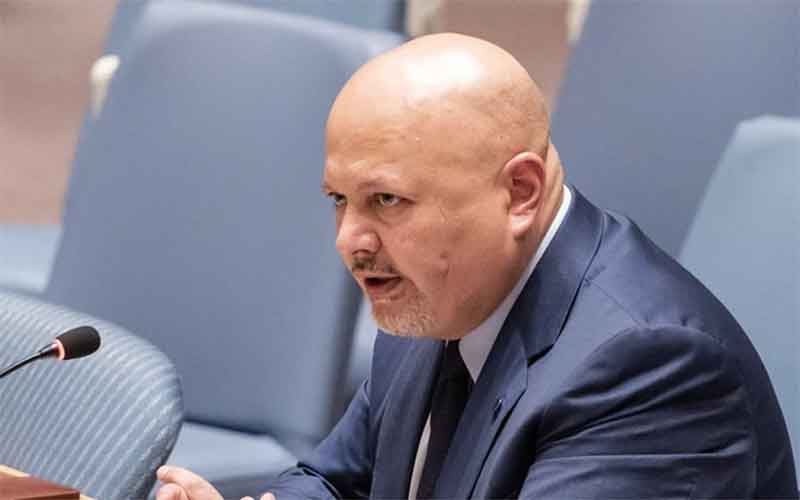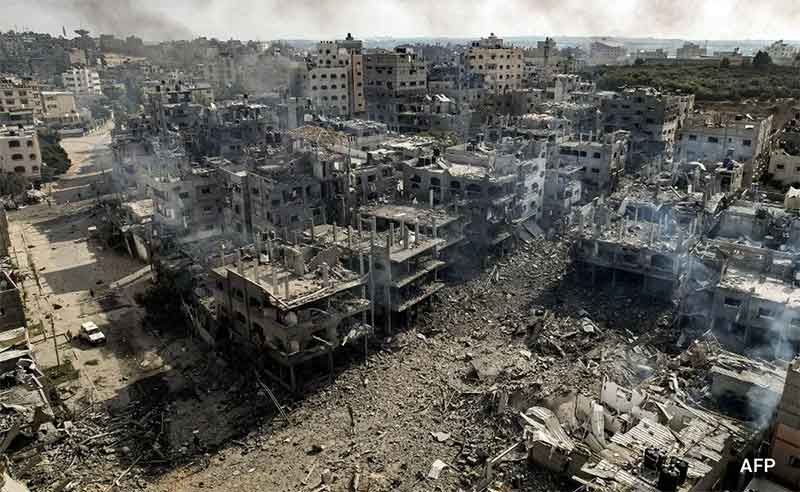
According to a recent study as many as 183,000 poverty linked deaths took place in USA in 2019. As this study has only covered population higher than 15 years of age, the total number of deaths is likely to be around 200,000.
The figure of 183,000 poverty related deaths was provided in a study published in JAMA Internal Medicine (Journal of the American Medical Association) on April 17, 2023. This research paper titled ‘Novel Estimates of Mortality Associated with Poverty in the US’ has been authored by David Brady of the University of California, Ulrich Kohler of the University of Potsdam and Hui Zheng of the University of Ohio. Drawing attention to the fact that these deaths are 10 times the number of homicides, the authors wonder why these do not receive the same attention. This estimate of mortality linked to poverty is regarded to be a conservative estimate by them. If cumulative poverty is considered, then mortality can be much higher.
Such a high number of poverty linked deaths is shocking in a country which is very rich with one of the highest per capita incomes in the world, which has been very well endowed with plentiful natural resources and whose currency has the exorbitant privilege of a universal (although now shrinking) acceptance in world. Hence this study has attracted a lot of attention. In mid-June this got much attention in a conference of the Poor People’s Campaign in the USA where there was talk of ‘policy murder’.
This study was based on 2019 data and after that there was the increased COVID and COVID response related mortality too, which is likely to have affected poor people more. The latest available data for the last two years reveals a significant decline in life expectation which is a rare phenomenon. For 2020-21 life expectancy declined to 76.1 years from 77, the lowest since 1996. This was on top of a higher decline of 1.8 years in the previous year, and if you take these two years together, then you have the highest decline in the entire century ( 2.7 years ) from 1921-23 onwards.
Scholars are asking—why the USA didn’t have a recovery from the COVID height like other comparable countries. They are also asking—why the life-expectancy in the USA in recent years has been consistently lower than in comparable countries, despite the fact that per capita health expenditure in the USA has been much higher? Does this not point to factors like higher poverty levels in the USA in turn related to much higher inequalities, as well to very high high levels of profiteering including fraud in the health sector?
During the COVID times several protective measures were introduced to reduce hunger, to prevent evictions, to reduce child poverty which have been withdrawn or are in the process of being withdrawn now. This can rather suddenly increase the risks for some of the poorest sections including the homeless.
However it is important to emphasize that the situation was quite serious even in the pre-COVID phase and the 183,000 poverty-related deaths figure is also for a largely pre-COVID year 2019. One aspect of poverty related deaths relates to the ability of people or households to meet emergency expenses. According to a Federal Reserve Report of 2018 on the economic well-being of US households about 40% of adults in the country would not be able to meet a $400 emergency with cash, saving or even a credit card charge that they could quickly pay off. About 27% of those surveyed would need to borrow money or sell something to find the $400 needed, while 12% would not be able to arrange this at all. Four years later, in year 2022 a You Guv survey for the Economic Security Project found 49% saying that they would be ill-equipped to cover a $400 emergency.
Around the same time Bankrate’s Annual Emergency Fund Report said that 57% of US adults are unable to afford a $1000 emergency expense. This report also stated that 68% of people are worried they wouldn’t be able to cover their living expenses for just one month if they lost their primary source of income.
A study by the Urban Institute in 2018 found that nearly 40 per cent of non-elderly adults and their families in USA struggled to afford at least one basic need for health care, housing, utilities or food in 2017. In this study based on a well-being and basic needs survey of the age-group 18-64, 23% said that they were food insecure in the last 12 months. 18% struggled to pay medical bills while almost the same percentage decided to go without some required medical treatment due to costs.
Millions of people in USA are finding it difficult to afford basic utilities like water (and sewerage) or electricity. A headline in the Guardian ( 23 June 2020) said—Revealed—Millions of Americans can’t afford water as bills rise 80%. This report, based on a study by this newspaper in collaboration with Consumer Reports and others, said that in some city neighborhoods over 40% of residents may be saddled with unpaid water bills. One report has stated that over 50,000 households in Detroit lost their water connections since 2014 because they could not pay their bills. A Bloomberg report was headlined—A tsunami of shut-offs–20 million US homes are behind on energy bills. About one-sixth of American households are behind on their utility bills. A Washington Post report dated October 1, 2020 was headlined—Millions of Americans risk losing power and water as massive unpaid utility bills pile up—17.9 million may be at risk of shut-offs as many state-protections end.
With a population of 330 million and with 128 million households, USA has about 150 million people with chronic health problems or chronic disease. There are 5.2 million vehicle crashes a year, or one per minute. 40 million medically consulted injuries and poisoning episodes are reported in a year, one per 3 households.
In recent times child poverty levels have been found to be 1.5 times higher than adult poverty levels. As for senior citizens, the Elderly Economic Security Standard Index informs that in 2016 a majority of them lacked the “financial resources required to meet basic needs.”
The Eviction Lab, Princeton University, has estimated that there are 3.7 million eviction cases in the USA in a typical year, or 7 per minute. In pandemic times moratoriums on evictions helped to prevent increase in evictions, but now that these are being phased out the threat of higher evictions looms large.
Poverty and poverty related distress should not be examined only as an economic phenomenon, but should be seen together with important social aspects, as in terms of lived experiences of people social and economic aspects are closely related. Certain ethnic and racial groups suffer much more from poverty and related problems. This has also been emphasized by the Poor People’s Campaign which has also linked high levels of violence in society to poverty and socio-economic inequalities.
Nearly 28 per cent of US households are single person households. A survey by Cigna before the onset of the recent pandemic revealed that almost half of the adults felt lonely. A more recent Cigna-commissioned survey on the post pandemic situation by Morning Consult revealed that 58% of US adults are affected by loneliness. A 2019 survey found 58% of people in the country felt that no one knew them well.
According to the National Centre for Injury Prevention and Control nearly 4.8 million intimate partner related assaults take place in a year. One in five women experience rape in their lifetime, one in three women experience physical violence, one in two experience psychological violence.
A report on child abuse is made every 10 seconds. Authorities trace 656,000 victims of child maltreatment in a year, but the problem is bigger. More than 4 million referrals are made to child protection agencies in a year.
The incarceration rate is the highest in the USA. Certain ethnic groups particularly blacks are the biggest sufferers in this context. About 10 million people face incarceration in a year. The USA has 5% of the world’s population but 25% of its prisoners. Over 50% of prisoners suffer from mental health problems.
Over 1.2 million violent crimes are officially estimated to take place in a year, a high number, but many such crimes do not reach police records and unofficial estimates of violent incidents are much higher.
According to the data-base of the Centers for Disease Control and Prevention, USA, more than 50% of the people in the USA will be diagnosed with a mental health illness or disorder at some point in their lifetime. Nearly 20 per cent people are affected by mental health problems in any given year. 1 in 5 children, either currently or at some point during their life, have had a serious debilitating mental illness. 1 in 25 Americans live with a serious mental illness, such as schizophrenia, bipolar disorder or major depression.
According to the National Institute of Mental Health, to make the situation clearer, mental health problems can be classified into ‘any mental illness’ (AMI) and ‘serious mental illness’ (SMI). In 2021, there were an estimated 57.8 million adults aged 18 or older in the USA with AMI—22.8% of all US adults. However this rises to 27.2% in the case of women and to 33.7% in the case of young people in 18-25 year age group. In the year 2021, 14.1 million adults in the age-group older than 18, were affected by SMI, defined in terms of serious functional impairment limiting major life activities. In percentage terms, 5.5% in age-group 18 and above are affected by SMI. This is 7% in the case of women. For young age-group 18-25 years, those affected by SMI are 11.4%.
Diagnostic Interview data from National Comorbidity Survey Adolescent Supplement has revealed that an estimated 49.5% of adolescents had mental health disorders. Among these affected, 22.2% had serious impairment and/or distress.
Suicides among 10 to 14 year old girls doubled and emergency room admissions for suicidal ideation and attempts among teenagers also roughly doubled during the last decade, according to different studies. Leading organizations of mental health professionals have stated that conditions of child mental health emergency already exist in the country.
The latest official statistics of ‘Youth Risk Behavior Survey’ (YRBS), USA, 2011-2021 released recently by the Centers for Disease Control and Prevention, (CDC), USA, have revealed truly alarming levels of distress among US youth.
The YRBS statistics tell us that in year 2021 42% of US high school students “experienced persistent feelings of sadness or hopelessness”. In the case of female students in 2021 as many as 57% of female high school students experienced persistent feelings of sadness and hopelessness. What is even more alarming in the YRBS data is that in 2021, as many as 22% high school students in the USA “seriously considered attempting suicide”. In the case of female students this number was as high as 30% in year 2021. Most sadly, the YRBS survey tells us that as many as 10% of high school students in the USA actually attempted suicide in 2021. This means that one out of 10 USA high school students attempted suicide in 2021.
Hence it is clear that while the burden of poverty in itself is also very high in the USA, if this is considered together which social aspects, then the burden of distress in the USA is simply too unacceptably high. It is also very high among children and younger people. One aspect of this relates to the very high levels of inequality in the USA, with the bottom 50% having only about 1.5% of the country’s wealth, and systems being relentlessly rigged in favor of the richest and against the poor. The insensitivity seen in externally aggressive policies also gets targeted against the poorer sections within the country, resulting in denial of justice and compassion.
Whatever the complexity, this much should be clear that solutions would emerge if a sincere and honest path based on peace, justice, democracy and environment protection is followed. ‘Sincere’ and ‘honest’ are key words here, as recent trends have been to go on increasing inequalities while talking about justice, to curb dissenting voices while talking of democracy and declare wars in the name of peace! In particular there is need to focus on the ethical dimension of the crisis and examine to what extent and in what ways the US society dominated by a small self-seeking minority of aggressive super-rich has lost the ethical compass to guide its actions and this is a key factor behind increasing distress, stress and uncertainty.
Another factor to explore is how the baneful influences driven by this self-centered minority, comprising perhaps just one or two per cent of the total population, is leading the country towards problems which are very distressing and stressful. They first created a highly unequal country with heavy concentration of wealth in favor of themselves, now they are aggressively using their power to perpetuate and aggravate this system. The top 1 per cent have as much as 35% of the wealth, while the bottom 50% have only 1.5% of wealth.
The private and public spending patterns give an indication of how solutions can be easily funded. The excessive military expenditure of over 800 billion dollars (this is the official figure: counting several other factors the number may be one and a half higher or even more) annually can be easily reduced by a half at least, potentially even more if wider peaceful policies are adopted. The private spending on legal and illegal various forms of gambling is around 600 billion dollars in a year—this can be easily halved at least. The current spending on all intoxicants (alcohol, tobacco, legal and illegal intoxicating drugs etc.) also adds up to around 600 billion dollars. With more difficulty, this too can be reduced by about a half. These three steps by itself ( many more such reductions of harmful expenses can be considered), while helping the cause of peace, health and stability in important ways, will also release annually over 1000 billion dollars in public and private funds to meet the real needs of food health, housing, education and environment protection in very significant ways. The question is why this has not happened already. This brings us back to the powerful forces which control society and stifle its ability to take ethical actions, make ethical choices.
It is important also to examine the links of the increasing internal distress of USA society with the increasing aggression of the USA at international level. As this writer has emphasized several times, such links need to be recognized and will help the peace movement within the USA to mobilize people to create a society which is at peace with itself and with the entire world, devoted more to reducing its own distress as a higher priority. Those who are the wealthiest and most influential have important links to and positions in the military industrial complex and so whip up war fury to benefit the big arms suppliers and military contractors, as well as mobilize public support around the imagined threat from this enemy or the other, in the process launching one war after the next. For almost 22 years 8000 billion dollars have been spent on the so-called war on terror, amounting to expenditure of 365 billion dollars per year or 42 million dollars per hour, while hunger and homelessness worsened in the USA, and reckless military misadventures led to the death of 4.5 million people (counting both direct and indirect mortality) and over 38 million displaced. Thus the distress caused internally and externally by wrong, unjust policies (which serve only a very small minority) is often inter-related.
Wherever societies are built on relations of dominance, the victim suffers but perpetrators also suffer as they have to reduce or even kill their sensitivities in order to adjust to the cruelties of a system dedicated to dominance. Hence the objective should be not to acquire the strength to dominate but to acquire the ability to love.
Once these wider links and issues are recognized, then these can pave the way for creating a US society which is at peace with itself as well as with the rest of the world.
Bharat Dogra is Honorary Convener, Campaign to Save Earth Now. His recent books include Planet in Peril, Protecting Earth for Children, A Day in 2071, Man over Machine, When the Two Streams Met and Earth without Borders.









































